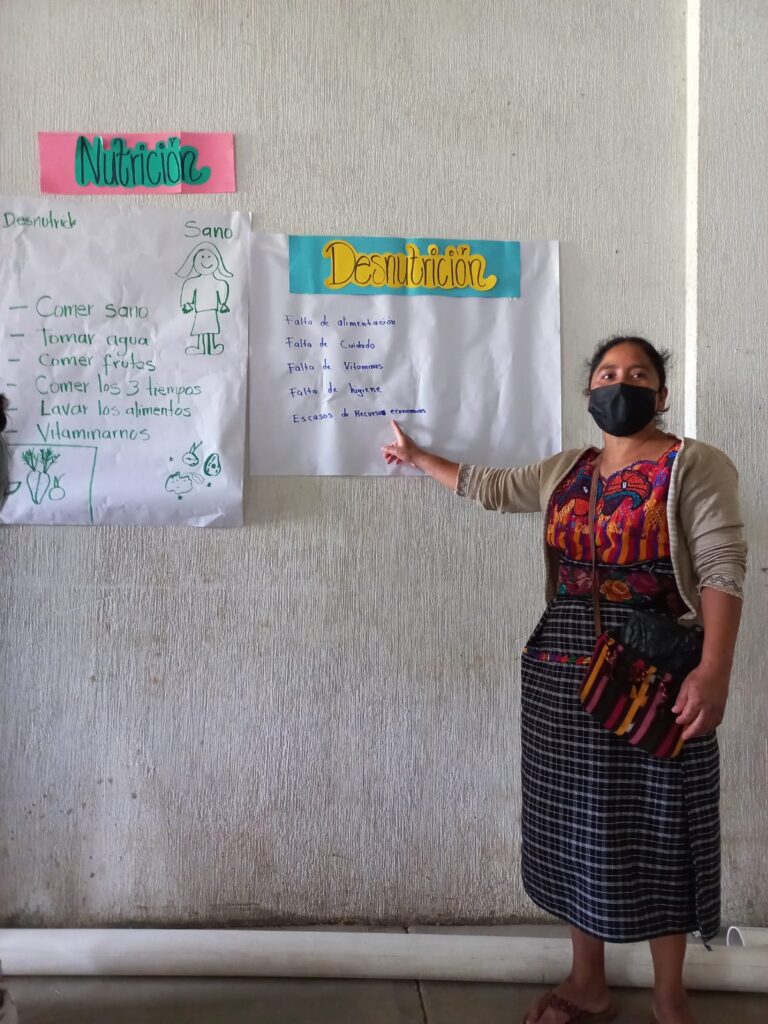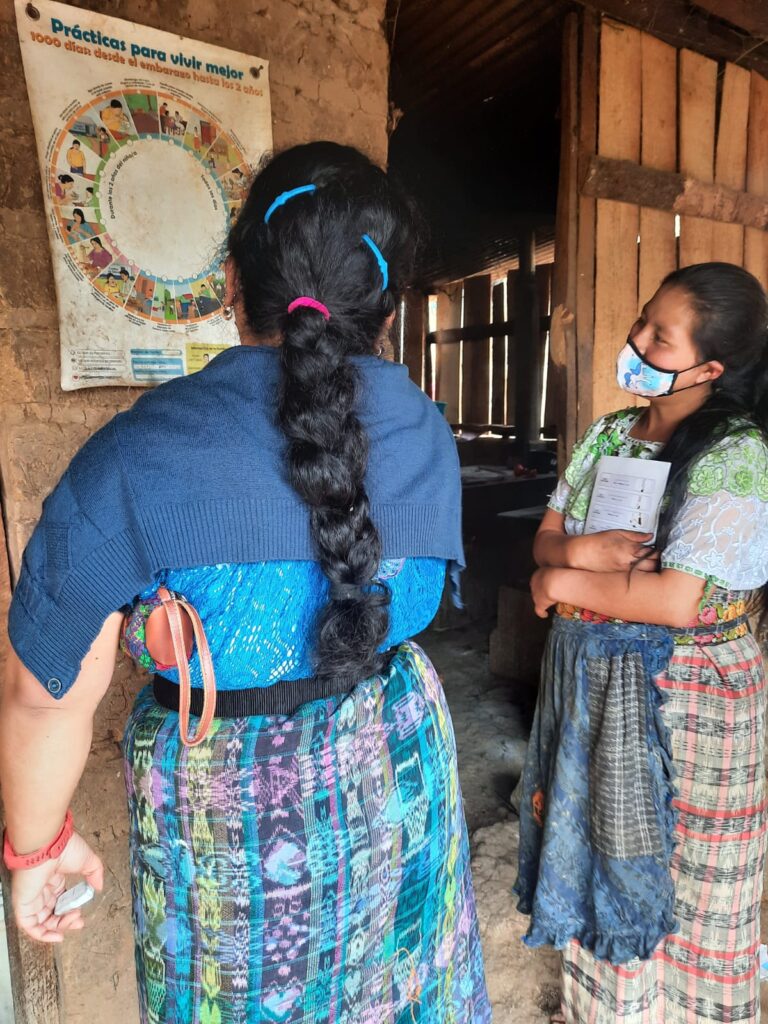Our success in combating malnutrition can be seen in the quantitative data gathered during monitoring and evaluation activities that show a clear downward trend in the incidence of chronic childhood malnutrition in our partner communities. At ALDEA we know that the numbers speak for themselves but that lived experience often speaks louder for those impacted by our programs so, although we can see the statistical changes through the data we collect, we also prioritize checking in to see if program participants notice a difference in their day-to-day lives. Here are some examples of how our nutrition program has impacted participating families:
Ana Chex, a mother of four from the community of Paquixic, shared that her children were malnourished and often sick and lethargic. Her fourth child was born after she began participating in ABPD programs. Ana reported that, thanks to what she learned in nutrition workshops, her fourth child doesn’t suffer from malnutrition. She added that he is full of energy and doesn’t get sick as often as his siblings.
Silvia Mux, from Cojol Juyú, told us that her youngest child was malnourished when ABPD began their intervention in the community. He had little appetite and was lethargic. She shared that after a year of working with ABPD, learning about nutrition, and receiving the necessary support to ensure that she could provide her child with adequate nutrition, her child is no longer malnourished. Silvia was happy to inform us that her child now has a much better appetite and is much more physically active, running, jumping, and playing with the other kids in the neighborhood.



